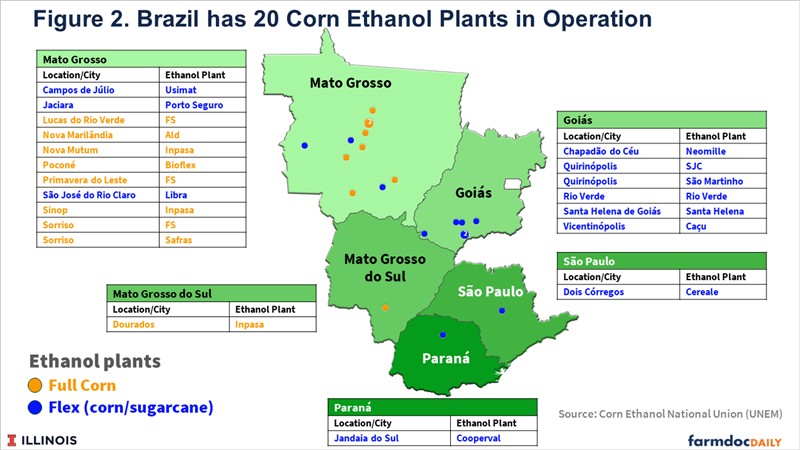| There’s no question that Electric Vehicles can aid in reducing emissions.. and possibly reducing fossil fuel usage. However, can we transition away fully from Fossil Fuels?
My question is Why are Biofuels being ignored in The Biden administrations zest for net zero?
It doesn’t make sense to me HOW can ethanol produced in South America produced from Sugar Cane fields… they harvest the entire plant.. it’s low density energy.. aka you can’t afford to harvest fields too far away from a processing plant.. and oh by the way.. you burn the leaves off before harvest.
Then you process.. ship to a port.. ship over seas.. import into the US.. and SOMEHOW this is going to have a lower score for SAF than US Corn based ethanol?
is this a joke?
But then again when you consider all the fossil fuels used in mining the resources to produce the copper (takes a decade or so to start a new copper mine.. which we’ll need more of to meet demand..). How can an EV have a lower carbon score.. heavier.. long supply chains.. when ALL Costs are included?
This is a good read.
https://www.city-journal.org/article/the-magical-thinking-behind-the-energy-transition We’ve witnessed amazing technological transformations over the past half-century when sufficient money was deployed to design and build machines, whether for warfighting, highways, or space travel. As Elon Musk recently said, “I think technology is the closest thing to magic that we have in the real world.” Musk doubtless knew he was reframing a maxim coined a half-century ago by the science fiction writer Arthur C. Clarke: “Any sufficiently advanced technology is indistinguishable from magic.” But rockets, including those of SpaceX, fly using hydrocarbons. EVs get built using diesel fuel. Solar cells are fabricated using coal. Neodymium magnets for wind turbines are acquired and processed by using coal, oil, and natural gas. Industries consume natural gas to fabricate the myriad polymers and metals needed for society, as well as the fertilizers that help feed the world. If you want a nontechnical guess at what the future holds, consider the question as viewed through the lens of finance, not physics. Larry Fink, CEO of investment behemoth BlackRock, a person and firm widely associated with “transition” enthusiasm, recently published an annual letter where he observed, after visiting 17 countries, that “leaders believe that the world still needs both . . . renewables and oil and gas.” As for BlackRock’s bet on that future, Fink notes that his firm has more than $500 billion invested in energy firms on behalf of clients, 75 percent of which is with traditional, not “green,” energy. That doesn’t sound much like a “transition,” does it?
btw.. the fastest growing ethanol segment in Brazil.. is corn based. Not sugar cane. If Sugar Cane is so efficient for SAF.. why is Brazil going in the other direction?
follow the $$$
https://farmdocdaily.illinois.edu/2023/06/brazil-emerges-as-corn-ethanol-producer-with-expansion-of-second-crop-corn.html
Corn has some advantages over sugarcane, but corn also presents some challenges. Ethanol plants in Brazil are powered by burning biomass as access to natural gas can be very expensive. Most ethanol production facilities use biomass from sugarcane, called bagasse, as the fuel source. Eucalyptus biomass is the primary fuel used in corn ethanol plants, although some businesses are testing alternate biomass sources (USDA. 2020). While sugarcane is its own biomass that can be used as fuel, it has a limited growing season and cannot be stored because it starts fermenting as soon as it is cut. Corn ethanol plants can produce year-round and make a variety of coproducts, such as corn oil, Distillers Dried Grains (DDG), and Distillers Dried Grains with Soluble (DDGS). There are also some differences in the production efficiency of plants depending on which crop they are processing. Ethanol can be produced from sugarcane with a yield of 80-85 liters per ton, while the yield from corn is 410-430 liters per ton, according to UNICA. However, sugarcane ethanol yields 6,500-7,500 liters per hectare, while corn ethanol yields 2,000-3,500 liters per hectare. Another difference is that the corn ethanol industry does not have its own planted area. Meanwhile, through more vertical integration, the sugarcane ethanol industry has its own planted area and stronger direct relationships with sugarcane suppliers.
High Concentration in Center-West RegionCurrently, there are 20 ethanol plants in Brazil utilizing corn as the feedstock. They are located in the states of Mato Grosso (11 units), Goiás (6 units), Mato Grosso do Sul (1 unit), Paraná (1 unit), and São Paulo (1 unit). Nine plants are corn-only, while the rest are flex plants producing ethanol from sugarcane and corn (see Figure 2). In addition, 10 other businesses have received construction authorization, which would bring Brazil´s production capacity to 9.6 billion liters of corn ethanol by the 2030/2031 season, according to the UNEM forecast.
Edited by JonSCKs 4/21/2024 08:44
 (DA435D9B-7145-4C18-830D-5AC74743D3B3 (full).png) (DA435D9B-7145-4C18-830D-5AC74743D3B3 (full).png)
 (1C3B8783-43E9-41AC-B038-32A97B675908 (full).png) (1C3B8783-43E9-41AC-B038-32A97B675908 (full).png)
Attachments
----------------
 DA435D9B-7145-4C18-830D-5AC74743D3B3 (full).png (66KB - 209 downloads) DA435D9B-7145-4C18-830D-5AC74743D3B3 (full).png (66KB - 209 downloads)
 1C3B8783-43E9-41AC-B038-32A97B675908 (full).png (90KB - 206 downloads) 1C3B8783-43E9-41AC-B038-32A97B675908 (full).png (90KB - 206 downloads)
|


 Transitioning to the Green economy.
Transitioning to the Green economy.